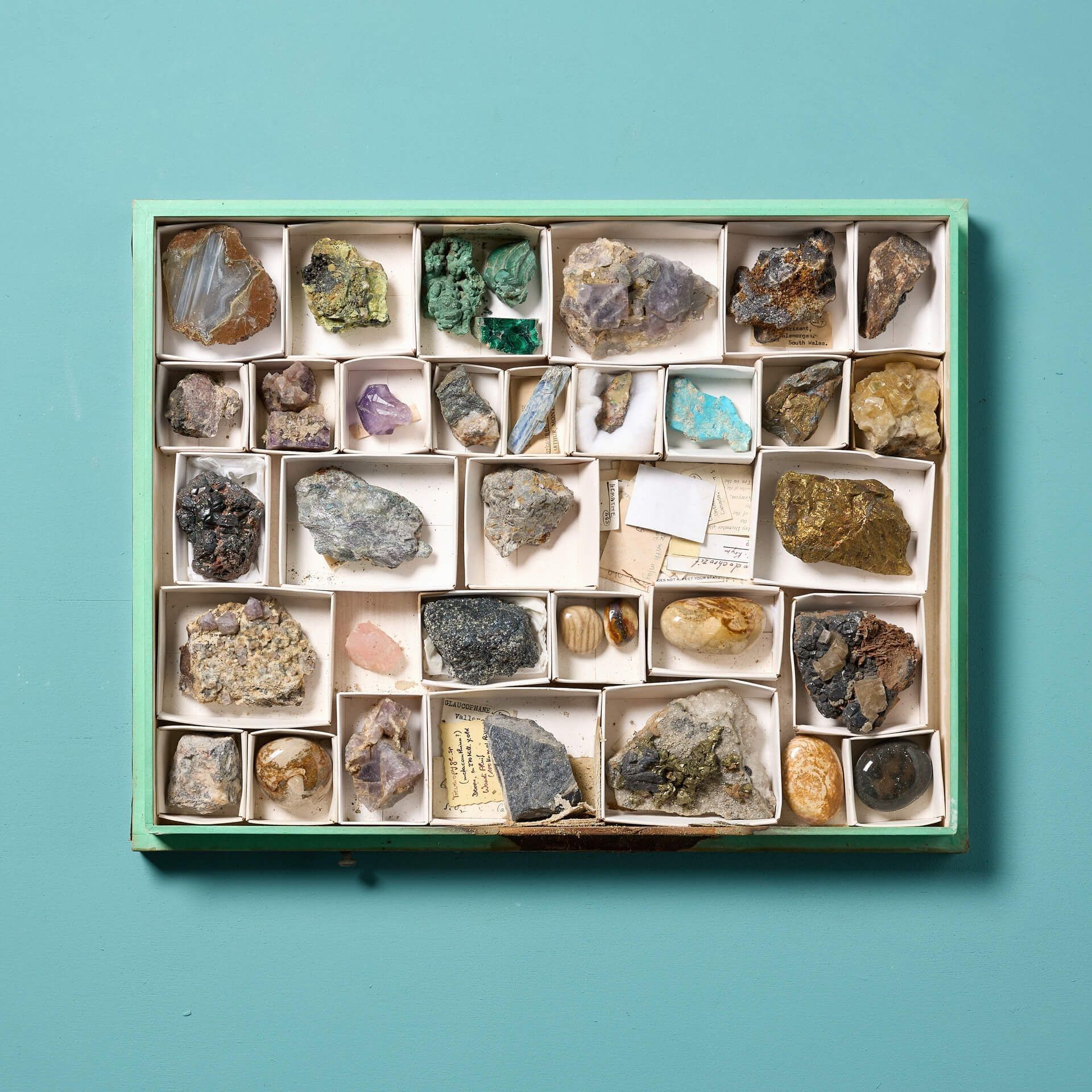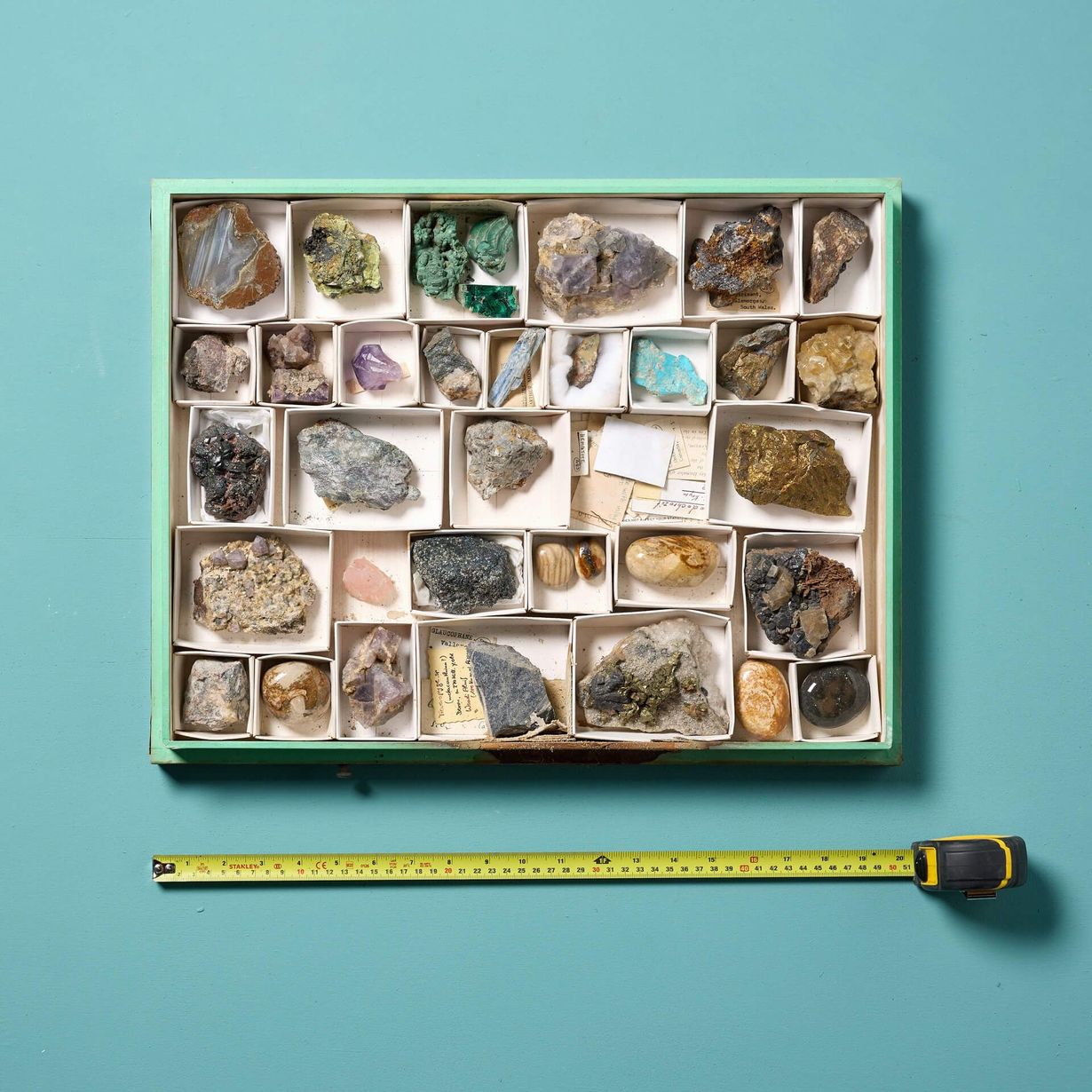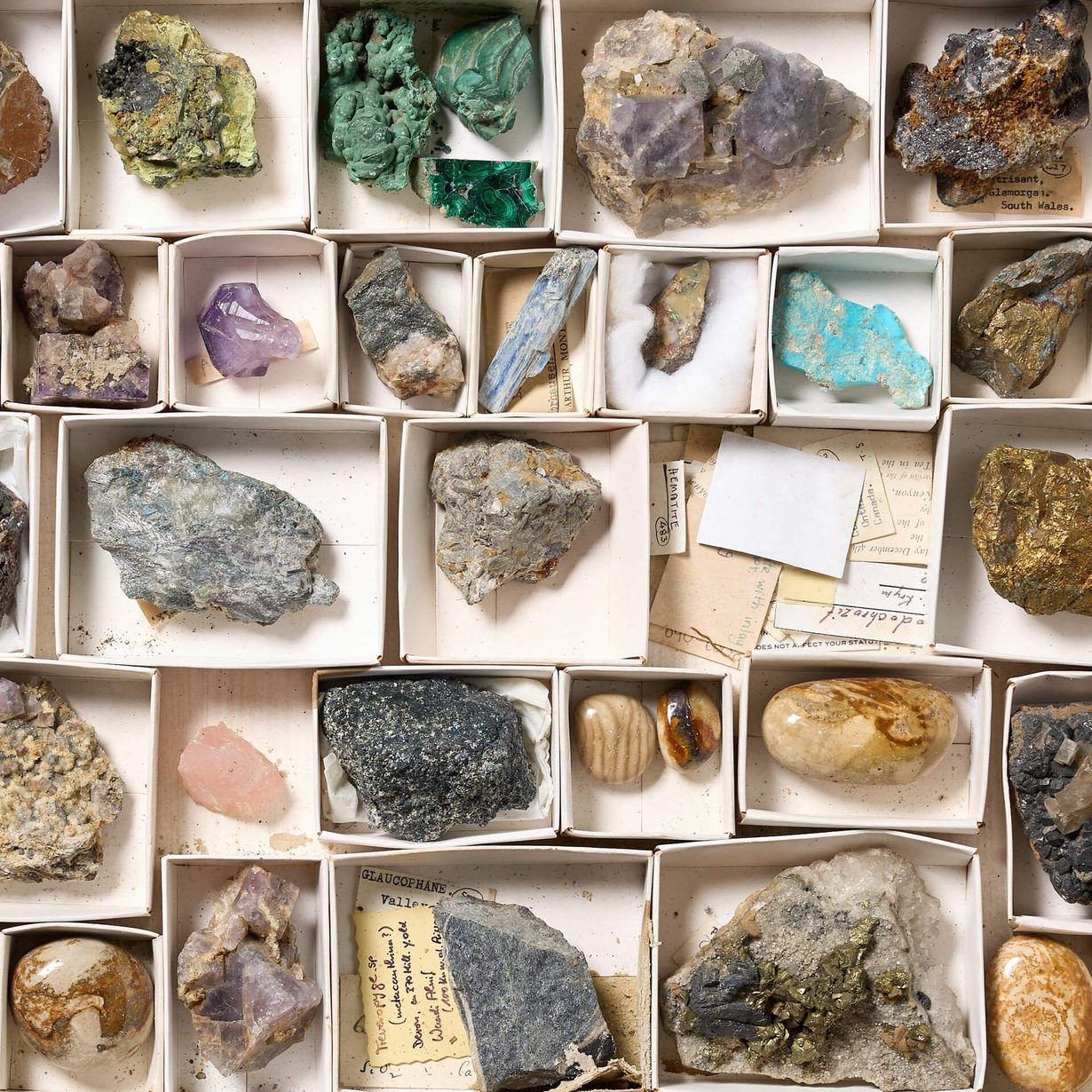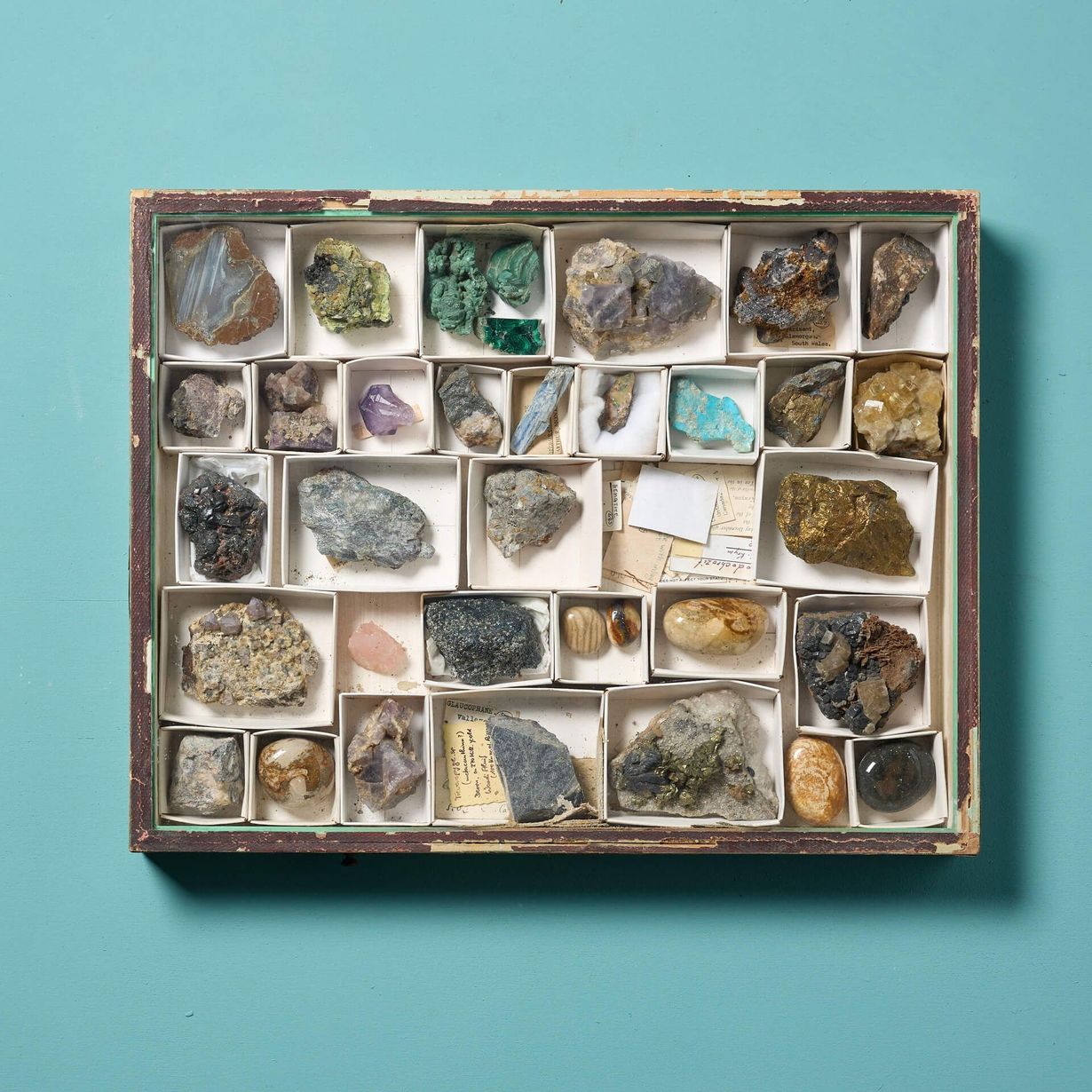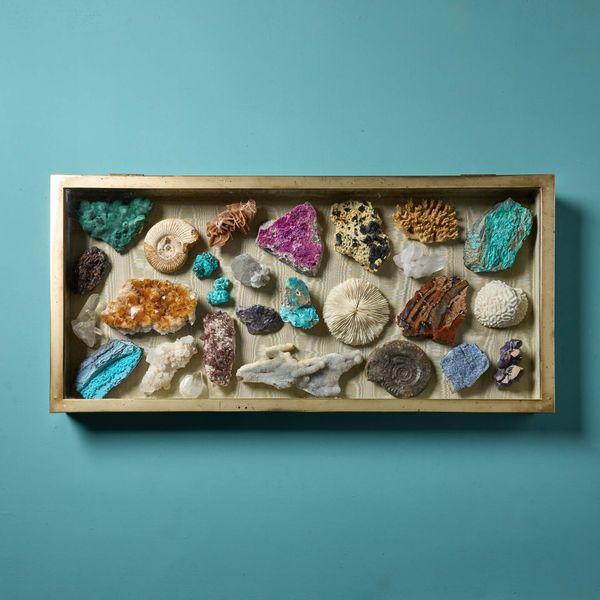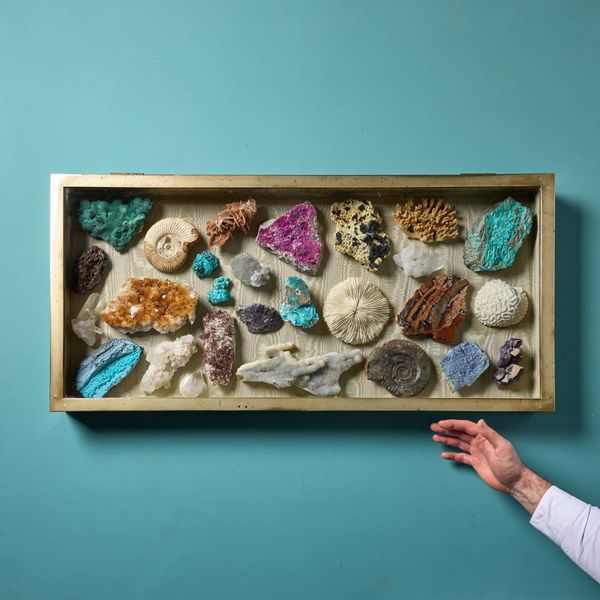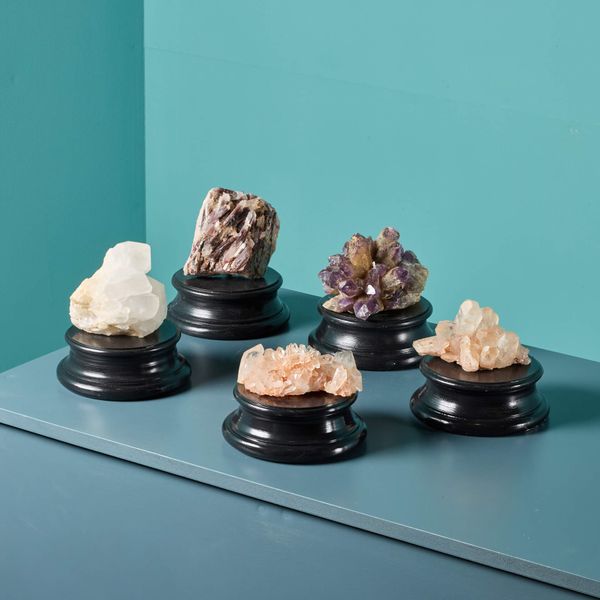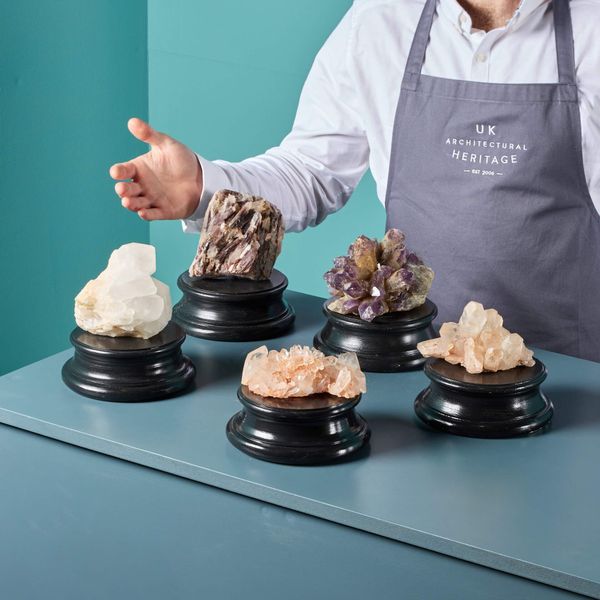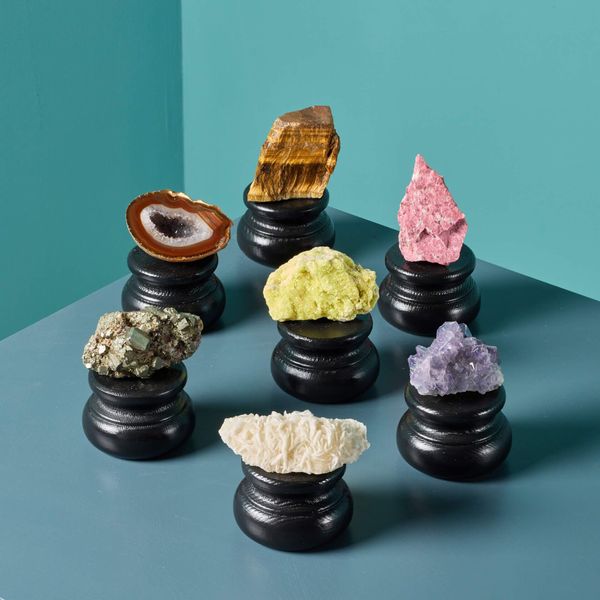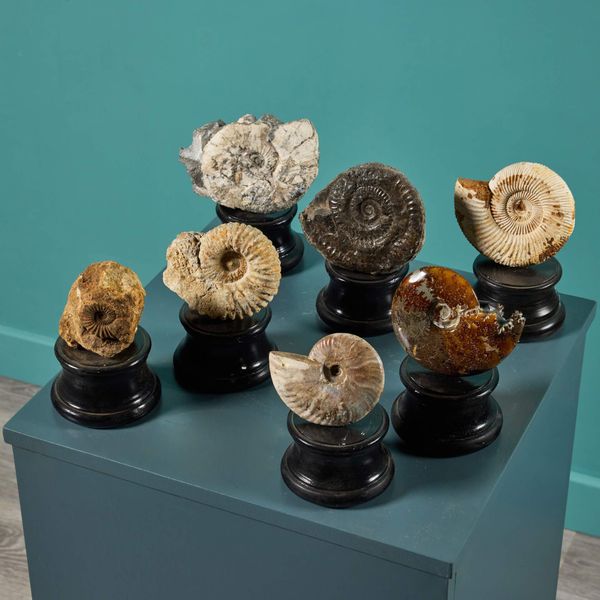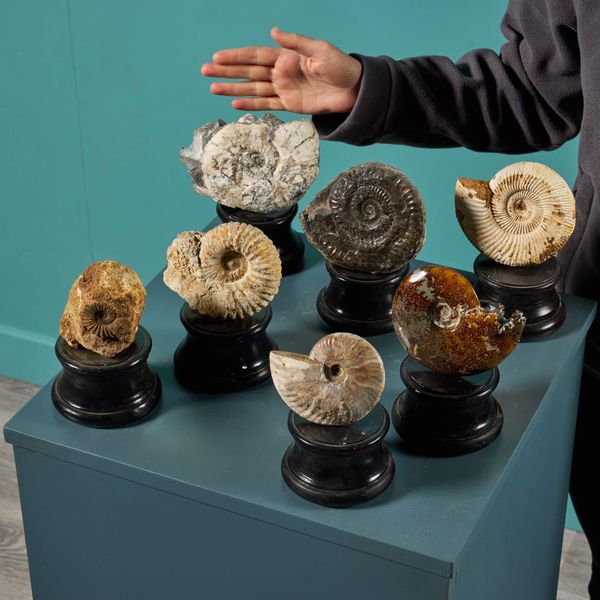About this piece
back to topA collection of museum minerals in a display case. Presented in a sleek glazed case with a removable lid, the collection includes 38 European minerals, including amethyst and pyrite, all with their own striking appearance. Each mineral is of a superb quality having come from a museum.
Moulded by nature over thousands of years, these 38 specimens are an impressive sculptural piece for an interior display or collectors cabinet.
More about the minerals inside…
Amethyst
Amethyst has a long history as a gemstone. In the ancient civilizations of Mesopotamia, it was highly valued and was used to create cylinder seals, engraved with religious designs and the owners name. While, ancient Egyptians also valued amethyst, using it in much of their jewellery.
Traditionally associated with purity and piety, amethyst has always been favoured by royalty as purple is considered a regal hue. In modern times, amethyst is both faceted and polished, used as a carving material, and frequently worn as jewellery.
Pyrite
Pyrite comes from the Greek “pyr” for “fire”, because it creates sparks when struck with another mineral or metal. Its brassy-yellow metallic colour has in many cases lead to people mistaking it for gold, hence the common nickname ‘Fool’s gold’.
Additional information
The minerals vary in size from approximately 2cm to 9cm.
The case is Victorian, circa 1880. The minerals are prehistoric.
